DESIGNING
FOR MISH-MASH: WORKSHOP FINAL SUMMARY by BEN HOOKER
-
Internet products and services profess to allow us to do almost everything
through the computer screen such that more and more of our time is spent
absorbed in the disconnected virtual words offered though desktop computers,
laptops, kiosks, PDAs, mobile phones etc. But as we increasingly rely
on these 'immaterial' Internet products and services as part of our daily
lives, we perhaps don't consider the extent and complexity of the wider
physical repurcussions.
---------------------------------------------------------------------
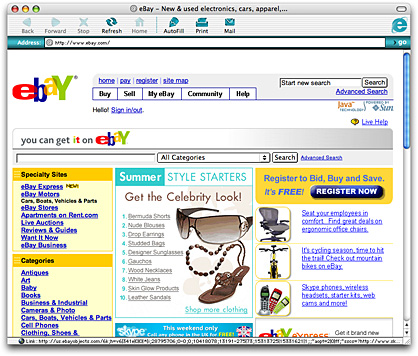

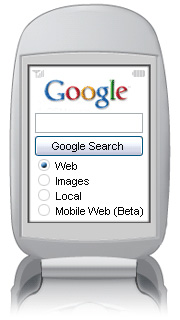
-
"Google has the potential to destroy the publishing industry, the
newspaper business, high street retailing and our privacy ... They know
what they are doing technologically; socially, though, they can't possibly
know, and I don't think anyone else can either. These are the earliest
days in a process of what may turn out to be radical change. The best
historical analogy for where Google is today probably comes from the time
when the railroads were being built. Everyone knew that trains and railways
would change the world, but no one predicted the invention of suburbs.
Google, and the increased flow of information on which it rides and from
which it benefits, is the railway. I don't think we've yet seen the first
suburbs." (John Lanchester writing in the London Review of Books)
---------------------------------------------------------------------

[Bram Dauw]
-
An aerial survey of the headquarters of Silicon Valley tech companies
does not readily reveal the complexity or magnitude of the physical fallout
from all the Internet building work that is going on. The call centres,
distribution depots, packing warehouses, server parks and so on are typically
not in close proximity of their high land-value company headquarters.
But these anonymous, infrastructural buildings very much exist as they
are the essential material components of the immaterial products and services
they enable. In the unloved landscapes at the urban periphery we start
to find them; for example the online book retailer Amazon's main UK depot,
one of the largest buildings in Europe, located north of London.
---------------------------------------------------------------------
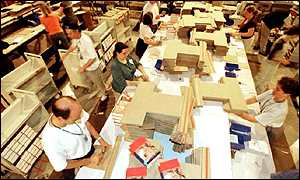
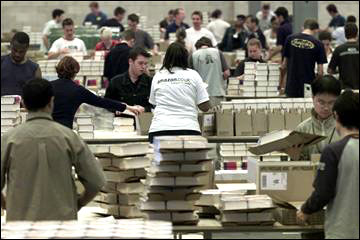
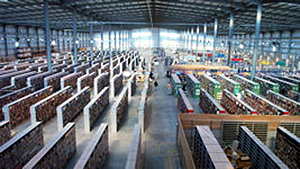
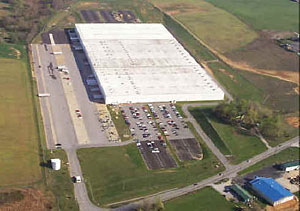
The ubiquity and fluidity we demand of network-based services has meant that the characteristics of the physical landscapes which contain the infrastructure to enable these services has been dictated by them. There is a new kind of environment – not urban, not suburban, not rural – which is analagous to a physical manifestation of the Internet. It is a growing, chaotic space containing depots, data parks, and distribution centres. Do these kinds of landscapes represent an ominous glimpse into the future? How should we react?
Perhaps, as virtual realities increasingly occupy our minds, we should try to inhabit more of the pure landscape of cyberspace. Google has already created a copy of the Earth for us to migrate to.
---------------------------------------------------------------------
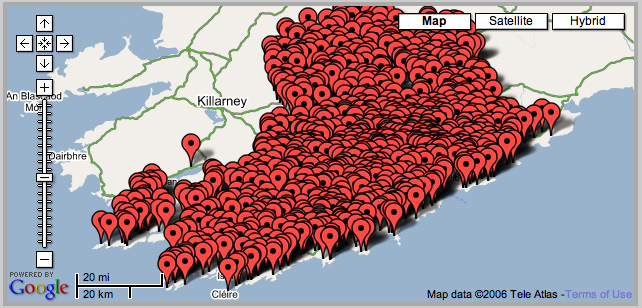
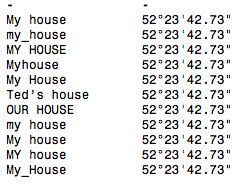
But although these new electronic landcapes are wide open for experimenting
with new forms of building, most early pioneers generally just seem to
want to create their existing physical world in cyberspace. Perhaps this
is understandable; familiarity is comforting ... although these virtual
dwellings seem so un lived-in and lonely.
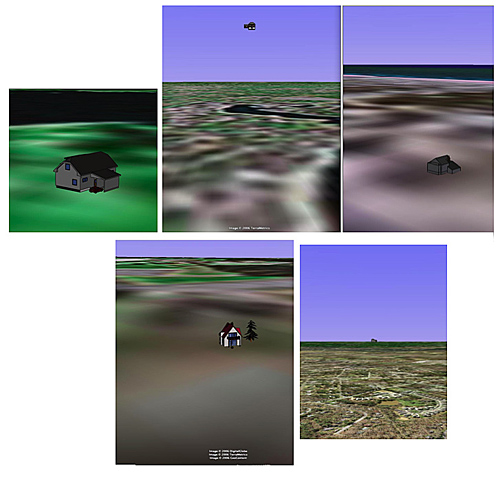
[Valerio Spoletini]
-
Where are the signs of life? In this landscape there are no noisy neighbours,
no twitching net curtains, no human animation. Perhaps there should be
– or at least an electronic equivalent to these things.
---------------------------------------------------------------------
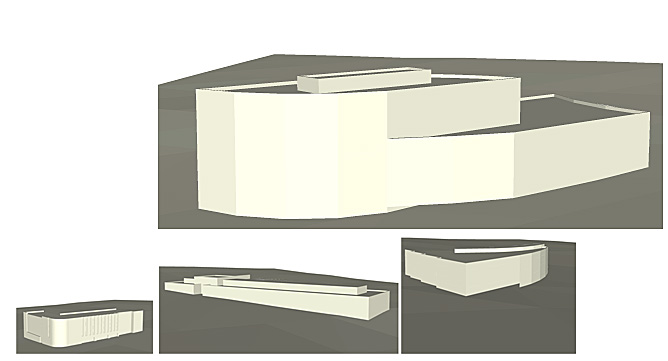
[Nicolas Besson]
-
Or perhaps, rather than fleeing to cyberspace completely, we can explore
a more hybrid existence where interfaces encorage activity in virtual,
computer generated worlds to subtly influence the physical places we already
inhabit.
---------------------------------------------------------------------

[Siméon Raymond]
Increasingly, the designer's role in our hybrid world is to create interfaces between different kinds of spaces. Some of these interfaces provide a sense of presence, some are tools for a particular activity such as upload or download.
---------------------------------------------------------------------


[Tatiana Rihs & Aude Genton]